Native Instruments recently released Scene: Saffron, the first installment in a new series of focused instruments for composers. We tested Saffron to see how it integrates into the workflow of media composer and electronic musicians, whether they’re creating ambient cinematic soundscapes or music beds for film and television.
NI describes the new Scene: series as “lightweight” and “streamlined,” with an easy-to-digest $29/€29 price point. Native observed that while there are plenty of products on the market that feature large libraries at expensive price points, there weren’t many offerings that are more economically accessible. With a smaller 1 GB footprint that doesn’t take up your entire hard drive, but contains savvy methodologies for getting diverse sounds, Native Instruments hopes the new Scene: series will appeal to a wider range of users.
Native Instruments Scene: Saffron Sounds
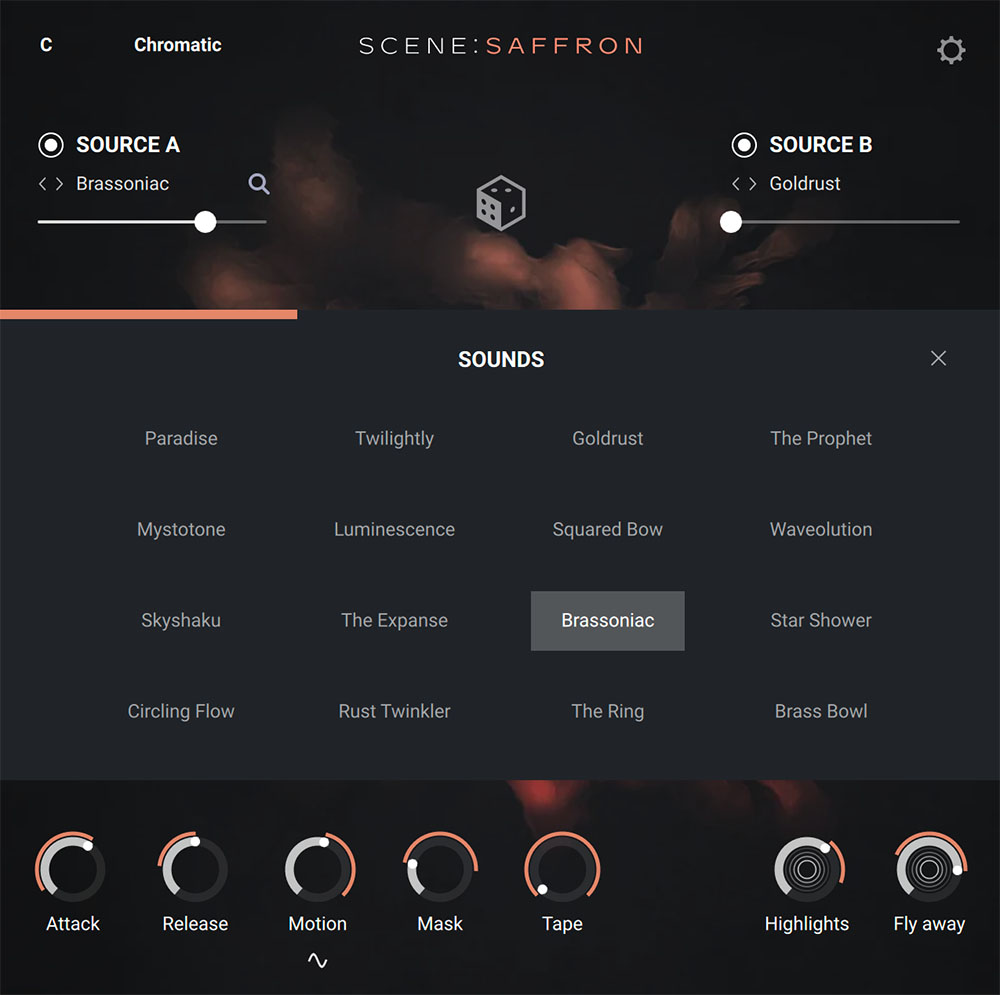

For a limited time only! Up to 80% off all Waves Bundles. PLUS click the banner above or the Go button for an additional 10%! This is Waves best deal yet! Get yours today before this special ends! Go!
Loading Scene: Saffron via Native Access only took a few minutes, and we were up and running on the Kontrol S49 mkIII controller in no time. Saffron is all about mood and drama, with many of the presets offering layered tension and tons of emotion. Although Native Instruments touted that Saffron was “designed with media composers in mind” in the press release, Geoff Wright, the company’s Music Tech Storyteller, was adamant that “Scene instruments are definitely not only for media composers.” Our reviewers agreed, feeling that producers working in Dub Techno, Ambient, Drum & Bass, and others could “find space in their arsenal” for Saffron. According to Wright, “Saffron is simply aimed at those who need soft, orchestral, pad-like textures for background layers and musical depth in any genre or format.”
Scene instruments are definitely not only for media composers…
While the sounds are baked into Saffron, there are many ways that you can manipulate the sounds to find something that will appeal to your project. Using one of the 120 presets as a starting point, users can employ the X/Y pad to shape, sculpt, and layer the strings, woodwinds, and other orchestral sounds to their liking. In addition, Native also has included a Randomizer—visually depicted by a Dice icon that has appeared in many of their other instruments, including the awesome Playbox. The Dice buttons appear next to many of the parameters, allowing the user to randomize the sounds in unexpected and often exciting ways. This is a great way to find inspiring new sounds at the click of a button when you may have run out of ideas. The chance-based methodology is not only useful but adds a whimsical component to Saffron that all of our reviewers found to be “quite fun.”
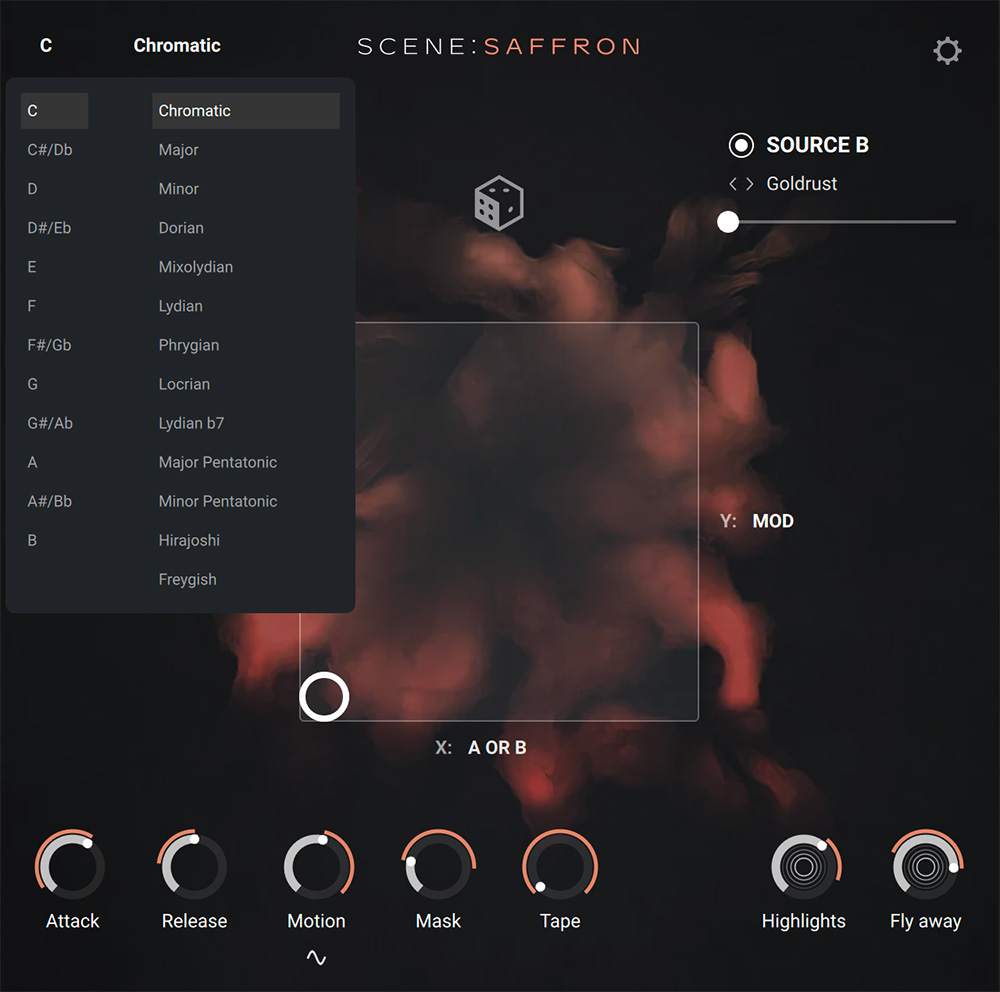
The square interface in Kontakt has an image in the background that is a marriage between an earth-toned watercolor painting and a Rorschach test. The image tastefully morphs and changes as you adjust parameters and provides Saffron with a visual identity without overwhelming the interface. Each one of the 120 presets contains two source sounds, A and B. The sound source can easily be changed by scrolling between the sixteen available sounds: Paradise, Twilightly, Goldrust, The Prophet, Mystotone, Luminescence, Squared Bow, Waveolution, Skyshaku, The Expanse, Brassoniac, Star Shower, Circling Flow, Rust Twinkler, The Ring, and Brass Bowl. Each sound has its own volume control as well as octave shifting (five-octave range). This allows you to select a bass tone for A and a higher octave for B to get a fuller-sounding tone. The X/Y pad comes in handy here for tonal balance. You can utilize the X Axis to mix between the two sounds (A or B) or have one overlap the other (B on A). Both provide the ability to evolve and morph the two sound sources over time.
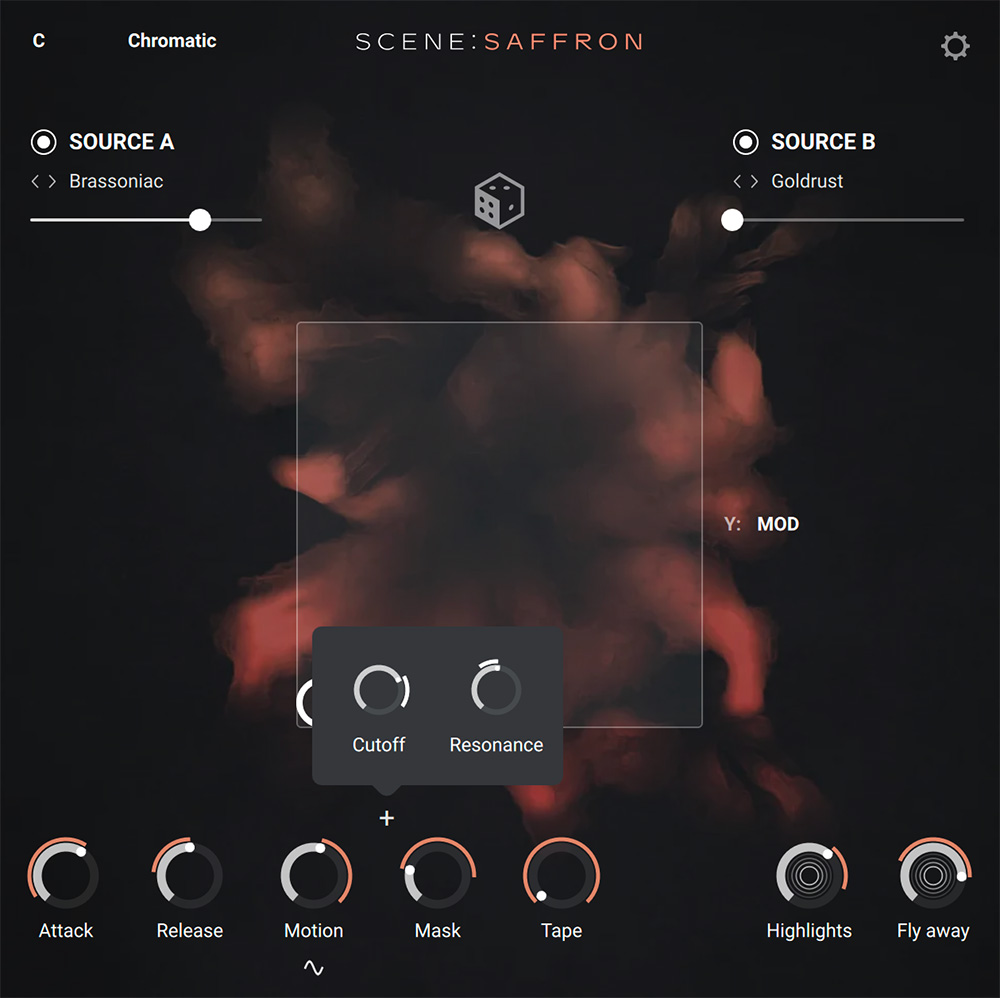
Saffron’s “Mask” is a filter with Cutoff and Resonance
Below the X/Y pad are the modulators: Attack, Release, Motion, Mask (Filter), and Tape (Saturation), with two effect sends to the right. The effects consist of four types: Reverb, Delay, Degradation, and Modulation, and have their own preset browsers. The Y axis on the pad provides Macro Modulation. Moving vertically changes all the modulators to increase or decrease their influence on the sound sources. You can manipulate the modulators via your computer or directly on an NKS-equipped controller. Changing parameters on our S49 felt immediate, with no perceived latency, and was rock stable.
Each one of the modulators allows you to dial in precisely how much the Macro Modulation affects the parameters, providing more finite control. As stated earlier, each modulator has its own Dice icon for unlimited experimentation. Of course, the central Dice control can be used, and you can even stipulate what gets randomized from four choices: Sources, Macros, FX Presets, and FX Values. Thus, if you’ve come up with a nice effects chain but want to see how it would work with different A/B sound sources, you can simply turn off the FX Presets and Values and explore your options in that manner.
Native Instruments provides the ability for the user to customize the amount of Volume, Tuning, Motion, and Filtering to Aftertouch
Scene: Saffron also provides a comprehensive Chromatic Key/Scale select, allowing users to choose a certain key that will force-map all incoming notes. Our reviewers found this to be a dynamic and dead-simple way to explore different keys. If all this action wasn’t enough, Native Instruments provides the ability for the user to customize the amount of Volume, Tuning, Motion, and Filtering to Aftertouch. Want more Motion and Volume but nothing else? Simply use the faders in the Aftertouch Setting Menu to dial in precisely what you’re looking for. It couldn’t be easier.
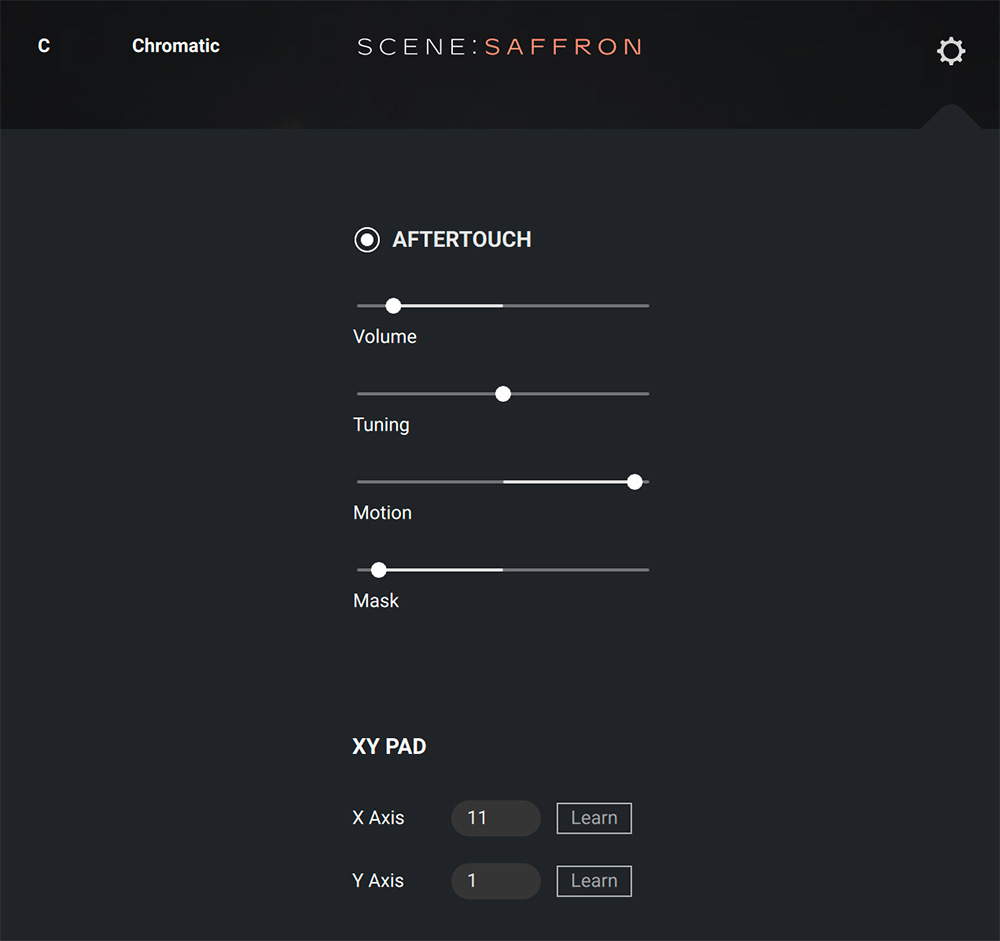
MIDI Designer Is Now Free!
MIDI Designer Pro X is now free to download! MIDI Designer Pro X is a professional-grade MIDI controller platform for iPhone, iPad and Mac. User-contributed layouts let you control everything from Ableton to Yamaha out of the box. Go beyond hardware and express your musical vision. Check out out now!
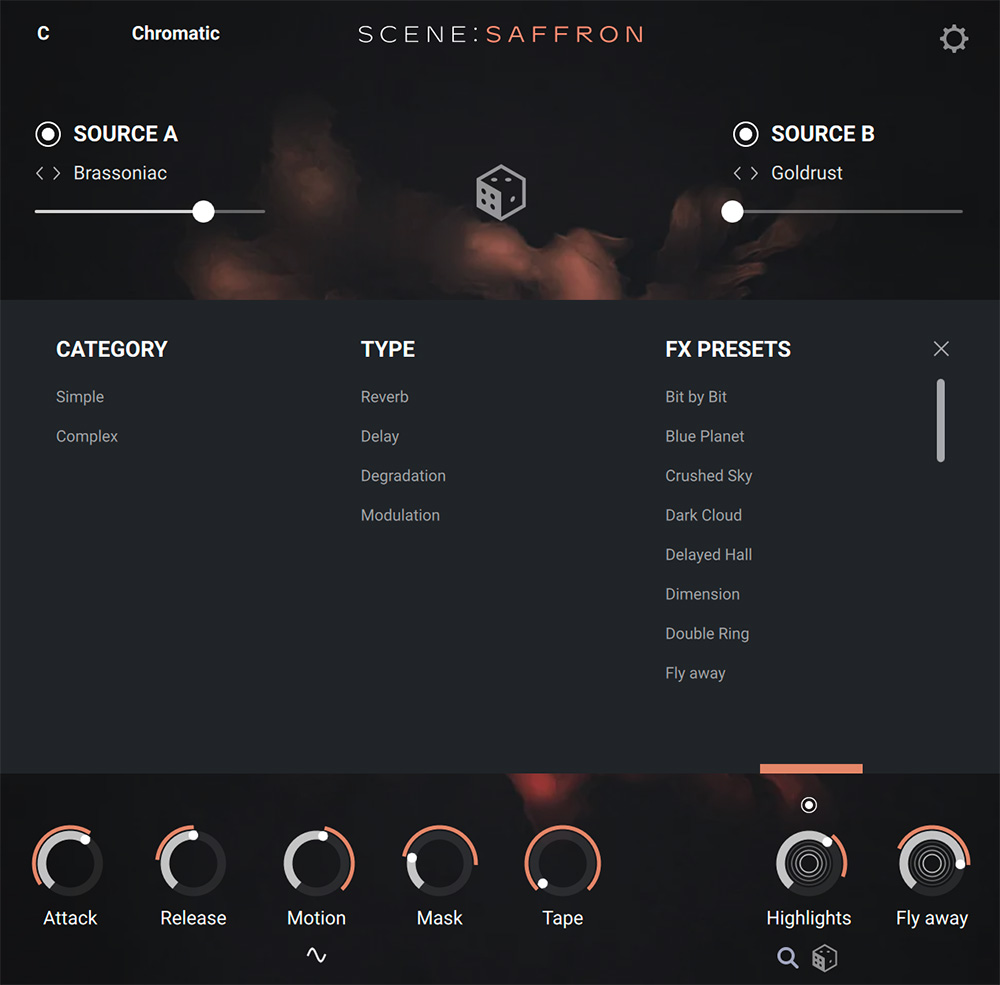
Native Instruments Scene: Saffron Features:
- 16 sound sources
- X/Y Pad blends between sound sources, effects, and sound controls, including woodwinds, strings, synths, and more
- Built-in effects, including reverbs, delays, and modulation
- Polyphonic aftertouch compatibility provides control of volume, tuning, filtering and motion
- Macro and Micro Randomizers – all presets and controls can be randomized with the Dice buttons
- Key and Scale Features
- “Lightweight” at 1 GB
- Affordable

The easiest way for electronic musicians to get their music onto Spotify, Apple Music, iTunes, Amazon Music, Tidal, Instagram, Facebook, TikTok, Pandora, Twitch & much more! Click the banner above or the Go Button to save 7% off of your signup! Go!
Conclusion
Native Instruments Scene: Saffron packs quite a cinematic punch for a mere $29 / €29. NI could have rested on the excellent sound quality alone, but the addition of the X/Y pad, modulation, effects, and aftertouch features makes this the easiest 29 beans you’ll spend all year. Highly Recommended.
Native Instruments Scene: Saffron Rating: 98%
Cheers:
+ Sound Quality
+ Value
+ Modulation
+ Effects
+ Aftertouch Customization
+ Chance-Based Exploration
+ Interface
Jeers:
– Not Maschine Compatible
Native Instruments Scene: Saffron costs $29 / €29.
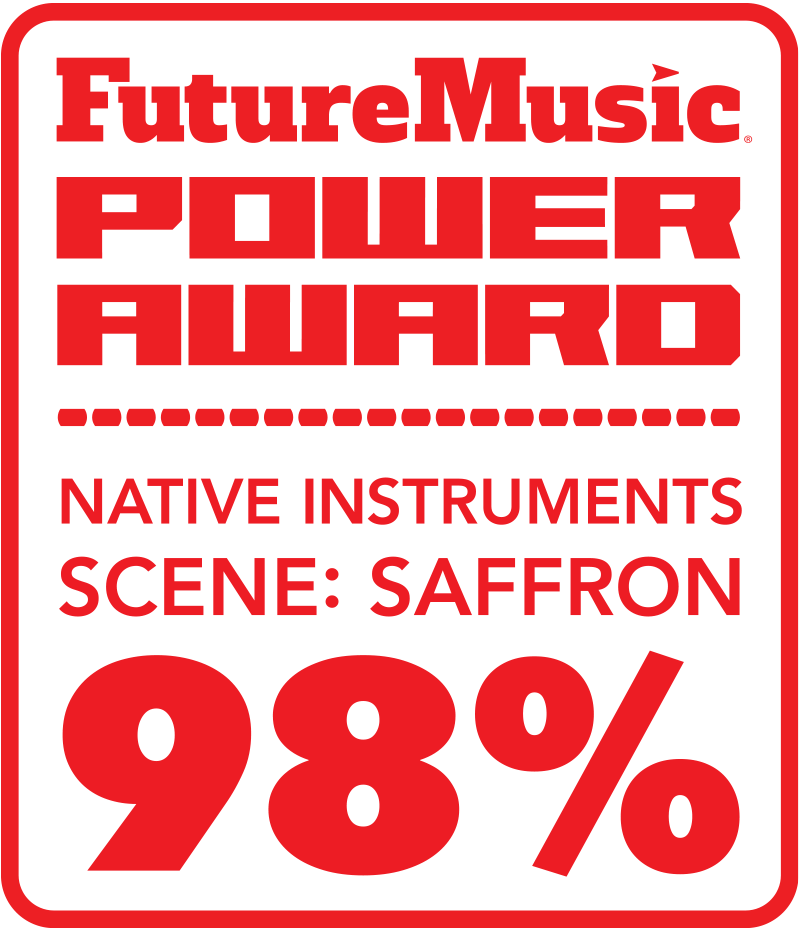
The Future: If Saffron is any indication of the quality of upcoming Scene: instruments to come from NI, we can’t wait to see what’s next.








